
IMMERSE YOURSELF IN A REAL GAME OF THRONES ADVENTURE AND EXPERIENCE ‘A SONG OF ICE AND FIRE’ FROM A UNIQUE AND EXCLUSIVE PERSPECTIVE.
Did you know that you could ride horseback at the Dark Hedges which was used as the King’s Road. Walk, trot and canter through the farmlands and the stunning beach that surrounds Ballintoy while following the footsteps of Arya Stark and Theon Greyjoy at Ballintoy harbor which was used as the filming location for the Isle of Pyke.
Navigate your way along the coastline to Larrybane and the very spot where Brienne beats Ser Loras and is given a place in Renly’s Kingsguard. Cast your eyes over the Dothraki Sea where Drogon was found, reuniting with Dany and bringing her back to Meereen for her conquest and explore Mussenndun temple which is the setting of the enigmatic Dragonstone. Truly immerse yourself in some of the most unique Game of thrones tours Belfast and Northern Ireland has to offer!
Tollymore Forest Park, County Down.
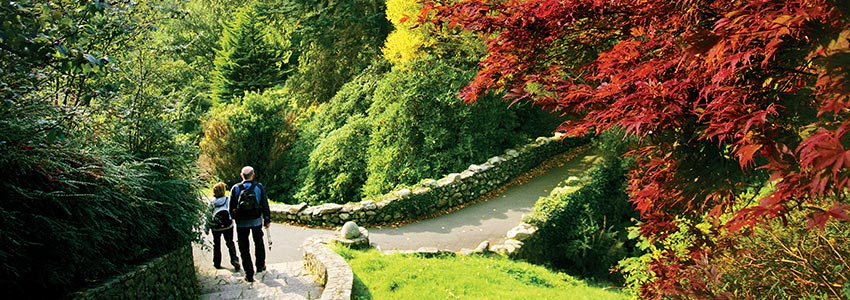
Tollymore Forest Park made its appearance way back in the first season of Game of Thrones as the woods where Ned Stark discovered a litter of abandoned direwolves, the symbol of House Stark, which he subsequently allowed his children to adopt. The park, which covers an area of over 1,600 acres and is home to fallow deer and red squirrels, has since made numerous appearances in the show. Tollymore Forest Park acts as The Haunted Forest where the Wildlings live and the Night Walkers roam. This park also provided the backdrop for the heart-stopping scene where Ramsay Bolton set his savage hounds on the unfortunate Theon Greyjoy.
Castle Ward, County Down.
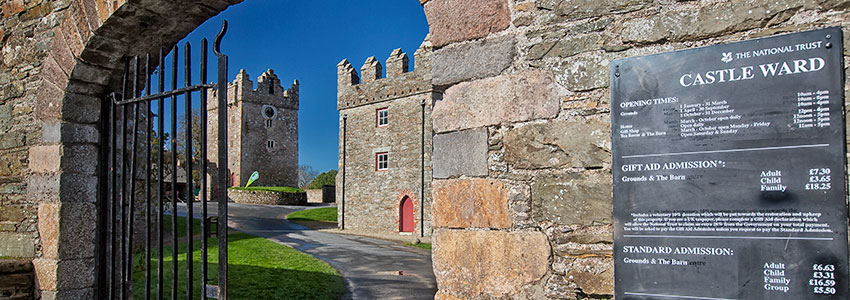
Located approximately forty minutes from Belfast, Castle Ward is better known to Game of Thrones fans as Winterfell, otherwise known as House Stark. Both the tower house at Castle Ward and the estate’s farmyard have featured in many of Game of Thrones most pivotal scenes, including the shocking moment in the series pilot when Bran Stark, having witnessed Jaime Lannister engaging in incestuous relations with his sister, Queen Cersei, was pushed from a tower and left for dead. This scene marked Game of Thrones as something new and different and like nothing we had ever seen before. Of course, as we now know, much worse lay ahead for both Winterfell and the Starks.
The Dark Hedges, County Antrim.

One of the most instantly recognisable of all the Game of Thrones filming locations in Northern Ireland, The Dark Hedges in County Antrim made an appearance in Game of Thrones when Arya Stark, on the run from the Lannister’s, disguised herself as a boy. Formed by a series of interlocking trees, The Dark Hedges have a haunting, eerie quality that lends itself to many a ghost story. Indeed, it is said that this popular tourist location, one of the most photographed in Northern Ireland, has its very own ghost. According to local lore, this dark avenue is haunted by a ‘Grey Lady,’ said to be the ghost of a local servant girl who died in mysterious circumstances.
Dunluce Castle, County Antrim.
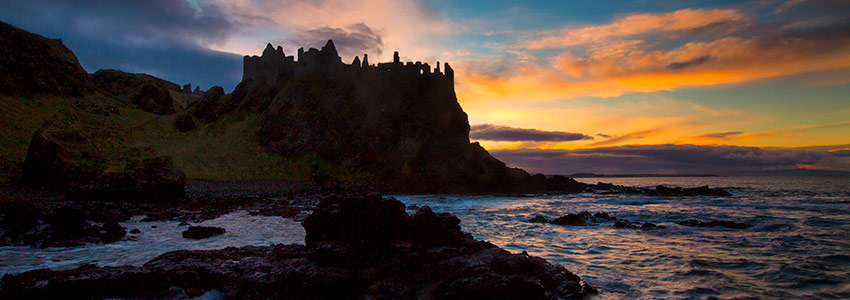
Game of Thrones fans will recognise Dunluce Castle as the location of The House of Greyjoy in the Iron Islands, otherwise known as the home of Theon and Yara Greyjoy. A medieval castle that dates from the late middle ages, Dunluce Castle has a history to match its dramatic clifftop location, with tales of shipwrecks, banshees and a kitchen that fell into the sea. Though it now lies in ruins, the castle is open to visitors, and can be accessed via a bridge from the mainland. Like many of the locations featured in Game of Thrones, Dunluce has a number of tours on offer, including a popular guided walking tour, which promises a ‘truly unique experience’ for the Game of Thrones fan and the history buff alike.
Portstewart Strand, County Derry
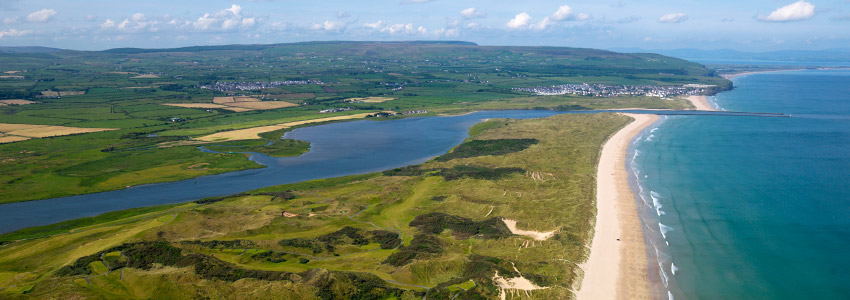
A beautiful Blue Flag beach renowned for its beauty and managed by the National Trust, Portstewart Strand served as the Dornish Coast in Season Five of Game of Thrones, which saw Jaime Lannister sent to fetch Princess Myrcella Baratheon back to the safety of King’s Landing. Unfortunately, as is so often the way in Westeros, things didn’t exactly go to plan for Jaime in Dorne, where he encountered the vengeful Sand Snakes.
Downhill Beach, County Derry.
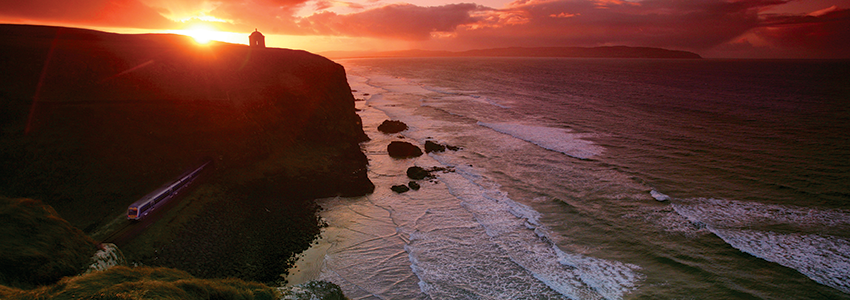
The picturesque backdrop for Dragonstone Island in Game of Thrones, Downhill Beach is one of the longest stretches of sandy beaches in Northern Ireland. The ancestral home of House Targaryen, ‘Dragonstone’ first appeared in season two of Game of Thrones when Stannis Baratheon fell under the spell of the ‘Red Witch’ Melisandre and rejected the Seven Gods of Westeros in favour of the mysterious ‘Lord of Light.’ Well, that turned out well for him. Along with the fame it has achieved via Game of Thrones, Downhill Beach is also famous for Mussenden Temple, which sits on a clifftop right above the beach. Originally built as a summer library on the estate of Frederick Augustus Hervey, this temple, which offers breath-taking views out to sea, is one of the most visited spots in Northern Ireland.
Cushendun Caves, County Antrim.
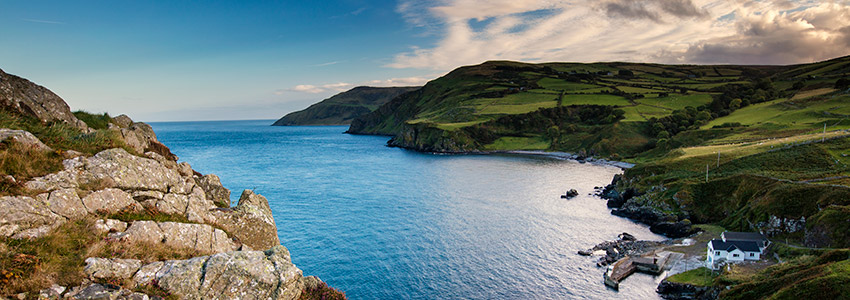
Speaking of Melisandre, it would be remiss not to mention one of the most unforgettable scenes in the history of Game of Thrones, the birth of the shadow baby assassin. You can visit the caves where the ‘Red Witch’ gave birth to her shadow baby at the Cushendun Caves, which are located close to the pretty coastal village of Cushendun, in County Antrim.
The Cliffs of Fair Head, County Antrim.
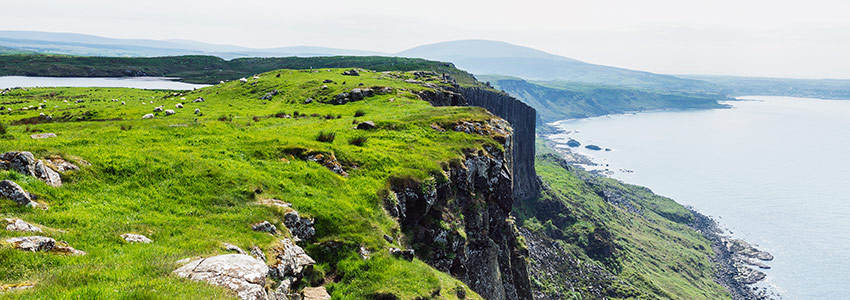
The latest of Northern Ireland’s Game of Thrones filming locations, The Cliffs of Fair Head on the Causeway Coast, bagged a starring role in the show when they provided the backdrop for what may become one of the most important scenes to ever feature in Game of Thrones. It is on these cliffs, that stands 600 feet above sea level, that Daenerys Targaryen and Jon Snow met for the first time. It’s the union that fans of the show had been waiting for, and it’s safe to say, the Mother of Dragons and the new King in the North, did not disappoint. Along with fantastic views, spectacular scenery, and a series of walking routes, many visitors to these cliffs take a ferry to nearby Rathlin Island, home to Northern Ireland’s only ‘upside-down’ lighthouse.

